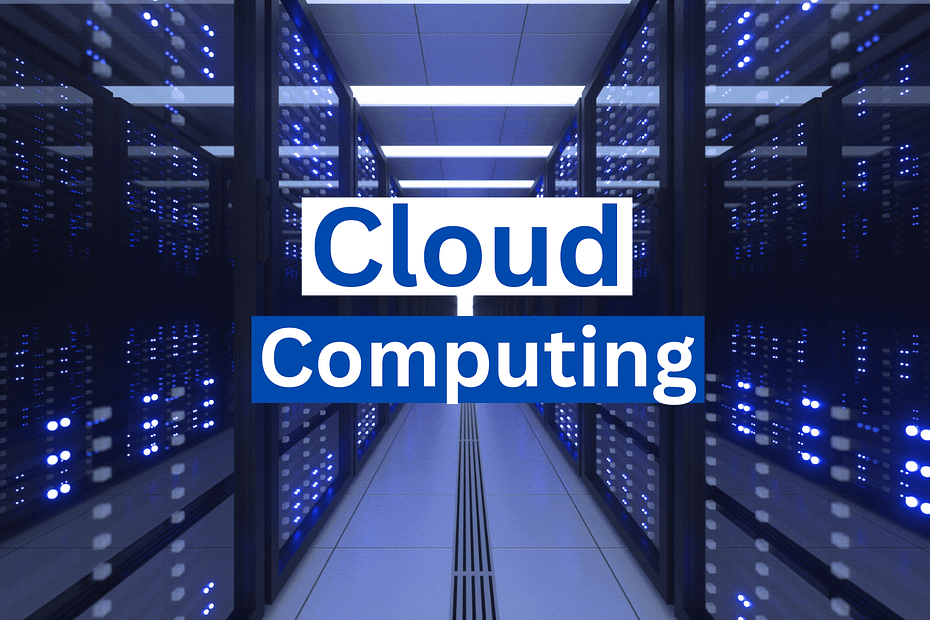Last Updated on: 1st April 2023, 12:49 am
In today’s digital world, cloud computing has become a buzzword. It is changing the way businesses operate and providing new opportunities for growth and innovation.
Cloud computing has made it possible for organizations to access computing resources like servers, storage, databases, and applications over the internet on demand, rather than maintaining and managing them on-premises. We will cover everything you need to know about cloud computing.
What is Cloud Computing?
Cloud computing is the delivery of computing resources over the internet on demand. It allows users to access applications, software, and services hosted on remote servers, instead of having to store them on their local devices.
Cloud computing provides an infrastructure that is flexible, scalable, and secure, enabling organizations to respond quickly to changing business needs.
Advantages of Cloud Computing
Cloud computing has many advantages for organizations, including:
- Scalability and flexibility: Cloud computing provides organizations with the flexibility to scale resources up or down quickly based on their needs. This makes it easier to handle fluctuations in demand and accommodate growth.
- Cost-effective: Cloud computing eliminates the need for organizations to purchase and maintain expensive hardware, software, and IT infrastructure. Instead, they pay for only the resources they use, making it a cost-effective solution.
- Increased security and reliability: Cloud computing providers invest heavily in security measures to protect their customers’ data. This includes regular updates, patches, and backups to ensure data is safe and secure.
See also: ChatGPT As DAN Do Anything Now
Types of Cloud Computing
Cloud computing can be divided into four main types:
- Public Cloud Computing: Public cloud computing refers to a cloud environment where computing resources are shared among multiple users over the internet. Public cloud computing is ideal for organizations that require flexible and cost-effective solutions.
- Private Cloud Computing: Private cloud computing refers to a cloud environment that is dedicated to a single organization. Private cloud computing provides increased security and control over computing resources.
- Hybrid Cloud Computing: Hybrid cloud computing combines both public and private cloud environments, providing organizations with the flexibility to balance their computing resources based on their needs.
- Community Cloud Computing: Community cloud computing is a shared cloud environment that is used by multiple organizations with similar requirements, such as security, compliance, or regulatory issues.
Cloud Computing Services
Cloud computing services can be divided into five main categories:
- Software as a Service (SaaS): SaaS is a cloud computing service that allows users to access software applications over the internet. This eliminates the need for organizations to purchase and maintain software on-premises.
- Platform as a Service (PaaS): PaaS is a cloud computing service that provides users with a platform to develop, run, and manage applications over the internet. This eliminates the need for organizations to purchase and maintain their own infrastructure.
- Infrastructure as a Service (IaaS): IaaS is a cloud computing service that provides users with access to computing resources, such as servers, storage, and networking, over the internet.
- Storage as a Service (STaaS): STaaS is a cloud computing service that allows users to store and access data over the internet. This eliminates the need for organizations to purchase and maintain their own storage infrastructure.
- Functions as a Service (FaaS): FaaS is a cloud computing service that allows users to run code on-demand without the need for servers or infrastructure.
Benefits of Cloud Computing Services
Cloud computing services offer many benefits to organizations, including:
- Scalability and flexibility: Cloud computing services allow organizations to scale resources up or down quickly based on their needs.
- Cost-effective: Cloud computing services eliminate the need for organizations to purchase and maintain expensive hardware and infrastructure, making it a cost-effective solution.
- Increased security and reliability: Cloud computing providers invest heavily in security measures.
Cloud Computing Architecture
Cloud computing architecture refers to the overall design of a cloud environment, including its hardware and software components.
Cloud computing architecture typically includes front-end and back-end components, as well as cloud delivery models and deployment models.
Cloud Computing Models
Cloud computing models refer to the various service models offered by cloud computing providers. The three main cloud computing models are:
- Software as a Service (SaaS): SaaS is a cloud computing model where software applications are delivered over the internet. Users can access these applications through a web browser, without the need for installation or maintenance.
- Platform as a Service (PaaS): PaaS is a cloud computing model where developers can build and deploy applications over the internet. PaaS provides developers with the tools and infrastructure they need to create and run applications without the need for maintenance or configuration.
- Infrastructure as a Service (IaaS): IaaS is a cloud computing model where users can access computing resources over the internet, such as servers, storage, and networking. IaaS provides users with a virtualized infrastructure, allowing them to create and manage their own computing environment.
Cloud Computing Deployment Models
Cloud computing deployment models refer to how cloud environments are deployed and managed. The four main cloud computing deployment models are:
- Public Cloud: Public cloud refers to a cloud environment where computing resources are shared among multiple users over the internet. Public cloud is ideal for organizations that require flexible and cost-effective solutions.
- Private Cloud: Private cloud refers to a cloud environment that is dedicated to a single organization. Private cloud provides increased security and control over computing resources.
- Hybrid Cloud: Hybrid cloud combines both public and private cloud environments, providing organizations with the flexibility to balance their computing resources based on their needs.
- Community Cloud: Community cloud is a shared cloud environment that is used by multiple organizations with similar requirements, such as security, compliance, or regulatory issues.
Cloud Computing Providers
There are many cloud computing providers in the market, but the top four providers are:
- AWS (Amazon Web Services): AWS is a cloud computing platform offered by Amazon. It offers a wide range of cloud computing services, including SaaS, PaaS, and IaaS.
- Microsoft Azure: Microsoft Azure is a cloud computing platform offered by Microsoft. It offers a wide range of cloud computing services, including SaaS, PaaS, and IaaS.
- Google Cloud Platform: Google Cloud Platform is a cloud computing platform offered by Google. It offers a wide range of cloud computing services, including SaaS, PaaS, and IaaS.
- IBM Cloud: IBM Cloud is a cloud computing platform offered by IBM. It offers a wide range of cloud computing services, including SaaS, PaaS, and IaaS.
Challenges and Risks in Cloud Computing
Although cloud computing offers many benefits, there are also several challenges and risks that organizations need to be aware of, including:
- Data Security and Privacy Concerns: Organizations need to ensure that their data is secure and that it is not accessed by unauthorized users.
- Downtime and Service Disruptions: Cloud computing providers can experience downtime, which can result in service disruptions for their customers.
- Legal and Compliance Issues in Cloud Computing: Organizations need to ensure that they comply with legal and regulatory requirements, such as data protection and privacy laws.
Future of Cloud Computing
Cloud computing is expected to continue to grow in popularity, as more organizations move to cloud-based solutions. With the rise of the Internet of Things (IoT) and the increasing demand for big data analytics, cloud computing is expected to play an even larger role in the future of technology.
As technology continues to evolve, so too will the capabilities of cloud computing, offering even more benefits and opportunities for organizations.



